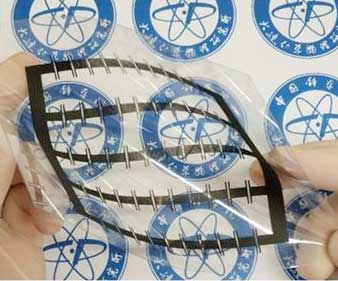Nanowerk January 23, 2019
Researchers in China developed an ink combining graphene and carbon black, both of which are conductive, with a polymer binder in a solvent. As it is applied, the force causes it to lose its viscosity, so it flows easily, but as soon as the force is removed, it thickens and keeps its shape. The ink can act as the microelectrodes, metal-free current collectors and interconnects, simultaneously. They applied the graphene ink to a substrate, such as glass or flexible PET plastic, using a patterned screen as a stencil. The resulting pattern includes all the conductive parts of the device. The ink dries in 12 hours, and then an electrolyte gel is applied and allowed to solidify for a further 12 hours, at which point the device is ready to use. Although a single microsupercapacitor supplies less than one volt, the researchers were able to integrate 130 of them in series, giving an output of over 100 volts. The devices are also flexible, if they’re printed on a flexible substrate, which should make them compatible with wearable electronics… read more. TECHNICAL ARTICLE

The supercapacitors are incredibly flexible. (© Royal Society of Chemistry)